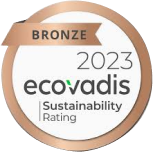You’re looking to get your goods to a new location. However, getting products from your manufacturer or vendor to a new location where you don’t have a physical presence is a bit more complicated than conventional mail or even couriers, who don’t cover you every step of the way.
When you’re shipping critical tech infrastructure—think servers, networking gear, and sensitive IT hardware—across borders, the term customs cleared carries more weight than just a stamp of approval. This means your goods have successfully passed regulatory review, taxes and duties have been paid, and your shipment has been legally authorized to move forward.
Understanding this milestone is essential for businesses operating in the global tech supply chain to avoid disruptions, penalties, or, worse, confiscated equipment.
What Does Customs Cleared Mean?
Customs cleared is the final approval granted by a customs authority that allows your shipment to enter the destination country and proceed to final delivery. This status is reached after all documentation has been verified, duties and taxes assessed and paid, and any physical inspections (if required) have been completed.
It’s important to distinguish between:
Customs Clearance
The process of getting a shipment reviewed by customs.
Customs Cleared
The status indicating that the shipment has been approved and released.
What Does Customs Cleared Mean For Imported Tech Goods?
For tech imports, this process can be more complex than for consumer goods. Many products fall under export control, require licensing, or trigger heightened scrutiny due to encryption, dual-use potential, or compliance issues.
If you are moving tech infrastructure or complex hardware into new markets, achieving customs cleared status is the green light that allows project implementation to proceed.
Customs Clearance Process for Tech Shipments
The process begins with a thorough review of shipping documentation, including commercial invoices, transport documents, and any necessary import licenses or compliance certifications such as Saudi Arabia’s Certificates of Conformity. Customs officials may inspect the cargo physically or virtually via scanning, depending on risk profiles and shipping origin.
If the paperwork checks out, duties and taxes are assessed. Payment is required before the shipment is released. At this point, once your shipment is customs cleared, it can proceed to the delivery phase without further regulatory hurdles.
Working with an experienced partner is key, especially when tech-specific regulations such as BIS (India), CE/FCC (EU/US), or EPR compliance come into play. TecEx takes full ownership of this process through our Importer of Record (IOR) service, ensuring your shipment moves smoothly through every step.
These complexities make a robust customs strategy non-negotiable. While many companies only consider import clearance, the export side often involves just as much red tape.
Frequently Asked Questions for Customs Cleared
Does Customs Check Every Package?
In short, yes. Although the exact process differs from country to country, it is always best to be properly prepared.
TecEx ships to over 200 destinations, each with unique customs processes. This is why having an expert on board is essential to getting your goods through customs every time.
For example, at the John F. Kennedy International Airport, US Customs and Border Protection (CBP) has a multi-tier process for taggingwhich packages to open and fully inspect.
Their inspection to-do list includes:
- Cross-check shipment data with Homeland Security, the FBI, and the DEA,
- Have detection dogs sniff out drugs,
- And visually review all packages with an X-ray scanner.
If your shipment arrives damaged, that may also signal full inspection before clearing customs. A good rule of thumb is to package and document your shipments with the expectation that they will be thoroughly inspected during the customs process.
How Long Does Customs Clearance Take?
As with any process that deals with safety and regulations, customs clearance can take some time. The entire process can take anywhere from a few hours to a few weeks. The amount of time depends on several factors, including:
- The regulations of the origin and destination countries,
- The type of cargo,
- Whether or not the imported goods are controlled/regulated,
- And how efficient your customs broker is.
Some countries have agreements with others that allow for quicker clearance times. Meanwhile, others have quite the opposite. Meaning times can vary to get to the customs cleared status.
For example, did you know that if you’re importing something from China to the United States, it’ll take longer than importing something from Canada to the United States? You might think, “Sure, that makes sense, China is on an entirely different continent!” But geography isn’t the only thing that comes into play here.
Due to China’s stricter regulations and an ongoing trade war with the United States, customs clearance lead times are much longer than they would be if you were importing something from Canada. Getting expert advice in these instances is highly recommended – trying to figure it out as you go can sometimes lead to your shipment getting stuck, penalized, ‘returned to sender’, or destroyed. And, no one needs that pain.
Who Handles Paperwork and Payments For Customs Clearance?
Usually, it is the responsibility of the Importer of Record or consignee (traditionally the buyer) to handle the paperwork and payments during the import process. However, this can depend on the Incoterms used.
TecEx acts as a third-party IOR, which means we must be present to declare the paperwork, pay the fees, and receive the shipment.
But what is an Importer Of Record (IOR)? An IOR is the legal entity entrusted with customs clearing the products and taking responsibility for the import, both at the time of clearance and for numerous years after a successful import. In essence, it’s a party appointed by the buyer/consignee or seller/shipper to handle customs formalities.
When is Customs Clearance Needed?
Customs clearance is required for all international shipments. So, if you’re a business looking to import and/or export products, you’ll need to have all the relevant documentation ready for customs officers to review.
What Duties & Taxes Have To Be Paid To Clear A Shipment At Customs?
If you’re shipping goods across the world, you’re probably familiar with the long list of taxes and fees you have to pay to get your product from point A to point B. Included on that list is something called duties. Most countries require that the importer pay duties (also called tariffs) and taxes on their imports.
Duty rates vary from 0% to 25% or more, depending on the product, country of origin (the country the product is manufactured in), the origin country (the country the products are being shipped from), and the country’s policies. Different types of goods are subject to different rates, with the cost usually calculated by quantities, weight, volume, or a combination. The best way to estimate these duties and taxes is to understand and use the country’s Harmonized System (HS) Code and tax structures.
Value Added Tax
Another unavoidable fee is import VAT (Value Added Tax). This tax is levied on all imports at a set rate that varies for each country. In some countries, such as India, varying VAT rates are applied, depending on the product. The good news about VAT is that it isn’t always a sunk cost. Some countries offer VAT deferment or exemption schemes, provided the right structure is in place. TecEx has numerous VAT products and customized solutions to help you reclaim or avoid paying VAT altogether.
Every country has additional unique import taxes based on its tax structures and policies. These may be isolated percentages of the shipment value, as with VAT and duties, or compounding in nature, where the taxes are applied to the shipment value as well as the total VAT and Duty amounts.
Examples of Other Fees and Taxes
Environmental or Regulatory Fees
These are especially relevant for electronics. Some jurisdictions require:
- EPR (Extended Producer Responsibility) compliance
- WEEE (Waste from Electrical and Electronic Equipment) contributions
- Battery and packaging fees
Other Surcharges
These may include:
- Anti-dumping duties
- Customs processing or handling fees
- Excise taxes (if applicable to telecom equipment or energy-related tech)
Understanding these costs upfront is critical to avoid budget overruns. TecEx provides near-perfect accuracy in duty and tax calculations, helping you build reliable landed cost models and protect margins.
Why Tech Imports Get Flagged at Customs
Customs authorities worldwide are especially vigilant about technology imports, and for good reason. Tech equipment often carries additional security, regulatory, and environmental concerns. Products may include encryption, be classified as dual-use, or require specific certifications to ensure compliance with local laws.
Even when everything appears routine, shipments can be delayed or flagged if they originate from countries under special trade protocols or political scrutiny.
Customs checks may include X-ray scanning, data verification against law enforcement or trade watchlists, and, in some cases, full unpacking and inspection. Any inconsistency in your documentation—from vague product descriptions to mismatched values—can trigger delays.
That’s why proactive preparation is non-negotiable. From accurate product classifications and goods descriptions to compliance labeling and licenses, every detail matters.
Here are a few real-world examples:
United States: Encrypted Networking Equipment from China
Shipments of enterprise-grade firewalls and routers from China into the US often face additional scrutiny due to encryption export controls under the Bureau of Industry and Security (BIS). These devices are flagged under EAR (Export Administration Regulations), and if not properly classified with the correct ECCN (Export Control Classification Number), the shipment may be held or even denied entry.
India: Electronic Devices Without BIS Certification
India enforces strict Bureau of Indian Standards (BIS) requirements for imports of electronics like laptops, motherboards, SSDs, and even power supplies. Attempting to ship such products without BIS registration leads to automatic customs holds at ports like Mumbai or Chennai. In 2023, several global tech vendors had shipments seized due to incorrect or missing BIS labels.
European Union: Lithium Battery Imports from Southeast Asia
Tech products containing lithium-ion batteries (e.g., tablets, handheld devices, UPS systems) are subject to ADR (European Agreement concerning the International Carriage of Dangerous Goods by Road) and must meet specific packaging, labeling, and safety documentation. Improperly labeled or undocumented lithium batteries can be rejected at EU borders, especially in countries like Germany or the Netherlands, where compliance enforcement is particularly stringent.
Brazil: Telecommunications Equipment Without ANATEL Approval
Brazil requires all networking, wireless, and radio frequency equipment to be approved by ANATEL, the national telecom regulator. For instance, importing an enterprise Wi-Fi access point or satellite communication device without valid ANATEL certification will result in delays or confiscation at São Paulo’s customs warehouse. ANATEL also requires labeling in Portuguese and certification tied to a Brazilian legal entity.
South Africa: Incomplete Declaration of Server Components
Customs in South Africa routinely inspect high-value tech imports such as servers, storage arrays, and blade enclosures. A common mistake is under-declaring the value of subcomponents (RAM, CPUs, SSDs), which triggers red flags and revaluation assessments. This not only delays the shipment but can result in financial penalties and seizure.
As these examples illustrate, it’s not just about shipping from point A to B—it’s about knowing the regulatory landscape in every country you enter. Tech hardware requires careful attention to:
- Proper HS code classification
- Accurate goods descriptions (e.g., “Intel Xeon E5-2690 v4 processor” instead of “computer chip”)
- Correct valuation and invoice breakdowns
- Country-specific certifications and compliance documents
Failing to meet these expectations is one of the fastest ways to lose valuable time, and possibly your entire shipment.
Avoid Customs Clearance Delays | Accelerate Deployments
Delays in customs can derail go-live dates, disrupt supply chains, and result in financial loss.
Work With The Right Import Partner To Grow Your Market
Developing your business internationally is a daunting task already without having to worry about import compliance. You need a partner you can trust for import logistics – one that understands the local rules and regulations when it comes to shipping products internationally.
TecEx offers more than just customs clearance. We provide a full-service international import solution for tech companies, handling everything from documentation and tax calculations to regulatory compliance and final-mile delivery.
International tech logistics is complex, but it doesn’t have to be your burden. With TecEx, you can import with confidence, knowing every compliance checkpoint is handled by a team that understands the technology landscape and the regulations that govern it.
.png)







